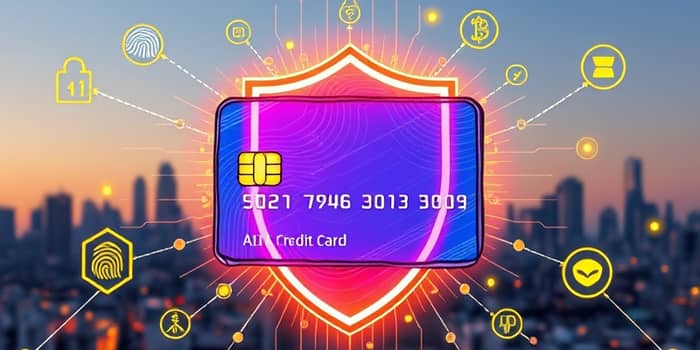As financial transactions increasingly shift to digital platforms, the importance of robust credit card security has never been greater. With global losses climbing and fraud schemes growing more sophisticated, leading issuers are deploying innovative defenses to safeguard consumers. This comprehensive guide explores how cutting-edge technologies, strict regulations, and proactive practices come together to deliver exceptional fraud protection for cardholders.
The Escalating Threat of Credit Card Fraud
Recent data paints a stark picture: in 2025, credit card fraud losses in the United States are projected to hit $12.5 billion. Globally, fraud is expected to exceed $43 billion by 2026, a nearly 4.5-fold increase over the past 15 years. Even more alarming, ecommerce fraud has surged by 140% in three years, accounting for a significant share of losses.
These statistics underscore a broader trend: as transaction volumes rise, so do opportunities for criminals. Card-not-present fraud alone caused $5.72 billion in US losses in 2022. In 2024, 150 million Americans experienced fraudulent charges, and 40% of those incidents involved newly opened accounts.
Why Credit Card Protections Outshine Debit Cards
One of the most compelling reasons to use credit over debit is the difference in liability. Under federal law, consumer liability for unauthorized credit card transactions is capped at $50—and major networks voluntarily extend that to zero. This zero fraud liability policy ensures that if you report suspicious activity promptly, you walk away with no out-of-pocket cost.
By contrast, debit cards draw funds directly from your bank account, and while they offer some protections, recovery processes can be lengthier. Consumers often face holds on legitimate funds while investigations proceed. Credit cards thus provide a critical buffer between fraudsters and your personal finances.
Cutting-Edge Security Technologies
Card networks and issuers have embraced a suite of advanced defenses to stay ahead of fraudsters. These measures not only deter counterfeiters but also offer real-time detection of emerging threats.
- EMV Chip Technology: Each transaction generates a unique code for every purchase, rendering stolen data useless for future counterfeit attempts.
- Tokenization: Card details are replaced by randomized tokens during payment, so intercepted information cannot be exploited.
- Advanced AI and machine learning: Networks analyze variables like location, device type, and spending patterns to assign a risk score, enabling real-time monitoring detects anomalies.
- Biometric and multi-factor authentication: Solutions like fingerprint scans, facial recognition, and one-time passwords bolster verification for online and in-person transactions.
Comparing Major Network Protections
Best Practices for Consumers
While issuer protections are robust, cardholders play a critical role in staying secure. Combining vigilant habits with smart tools can fortify your defenses.
- Regularly review statements and set account alerts for unusual charges.
- Enable biometric logins and strong passwords on banking apps.
- Sign up for identity theft protection services offering dark web surveillance services and credit monitoring.
- Use secure networks and avoid public Wi-Fi for sensitive transactions.
Responding to Fraud: Steps to Take
If you suspect unauthorized activity, swift action is key. First, contact your card issuer immediately—most require notification within 30 days to maintain zero liability coverage. Request a card replacement and ask for provisional credit while the investigation proceeds.
Next, file a report with the Federal Trade Commission and, if necessary, your local law enforcement. Document all communications and keep records of dates, names, and reference numbers. Finally, monitor your credit reports for unexpected account openings or inquiries, and consider placing fraud alerts or credit freezes if you detect further irregularities.
Looking Ahead: Emerging Threats and Innovations
The battle against credit card fraud is an ongoing arms race. Cyberattacks, data breaches, and sophisticated phishing schemes continue to threaten both consumers and merchants. However, the future holds promise: quantum-resistant encryption, decentralized identity frameworks, and deeper AI integration will further harden payment systems.
Collaboration among financial institutions, regulators, and technology firms is essential. By sharing threat intelligence and adopting unified security standards, the industry can adapt swiftly to evolving risks, ensuring that cardholders remain protected in an ever-changing digital landscape.
Conclusion
Credit cards today offer more than just convenience—they provide a fortress of protections against fraud. From EMV chips and tokenization to advanced AI-driven monitoring and zero liability policies, these layered defenses work together to shield consumers. By combining issuer safeguards with prudent personal practices, you can transact with confidence, knowing that exceptional fraud protection is on your side.
References
- https://www.bankrate.com/credit-cards/advice/major-credit-card-networks-protect-against-fraud/
- https://www.nerdwallet.com/article/finance/comparing-identity-theft-protection-services
- https://www.penncommunitybank.com/blog/national-data-privacy-day-a-2025-guide-to-fraud-prevention-financial-security/
- https://www.nerdwallet.com/article/credit-cards/credit-card-issuers-0-fraud-liability
- https://merchantcostconsulting.com/lower-credit-card-processing-fees/credit-card-fraud-statistics/
- https://scoop.market.us/fraud-detection-and-prevention-statistics/










